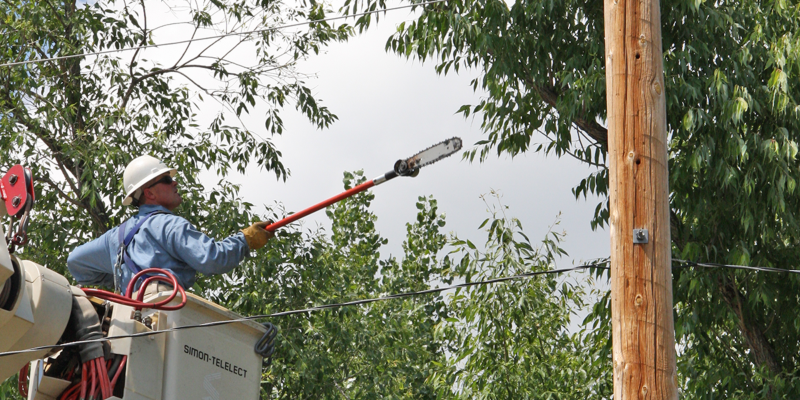Co-ops Harness the Power of Data for Wildfire Protection

Today’s utility companies have access to a vast array of data. Many are leveraging these data to optimize vegetation management programs, mitigate wildfire risk and improve system reliability.
“Leveraging data and artificial intelligence in vegetation management empowers electric utilities to make more informed decisions, allocate resources efficiently and ultimately enhance the reliability and safety of their electrical infrastructure,” CFC Director of Utility Research & Policy Brian Sloboda said.
Data can be collected from various sources, including satellite imagery, unmanned aerial systems (UAS), LiDAR technology and ground surveys. These data can then be used to create detailed maps of the utility’s infrastructure and the surrounding vegetation. Many systems are employing artificial intelligence (AI) algorithms to analyze these data, identifying potential risks and areas of concern, such as overgrown trees or vegetation in close proximity to power lines.
AI-powered predictive models can be developed to forecast vegetation growth patterns based on historical data and environmental conditions. This enables utilities to proactively plan and schedule maintenance activities, reducing the likelihood of outages caused by vegetation-related incidents. It can also be instrumental in wildfire mitigation efforts.
Wyoming-based Powder River Energy Corporation serves 27,000 meters and maintains 180,000 distribution poles, 10,000 miles of distribution lines and 700 miles of transmission lines. The cooperative has implemented multiple programs designed to improve its ability to maintain the reliability and resiliency of its system while mitigating the threat of wildfires.
Powder River began with pole-by-pole inspections of the system using UAS. The drone captured images of each pole. In 2022, it collaborated with Overstory to provide a satellite-based vegetation catalog of the system. The system implemented by the cooperative identifies the distance from the tree to the conductor and categorizes it into a wildfire risk category.
“We love data,” Powder River Energy Corporation Program Manager Brenda Green said. “The more information we have, the better decisions we can make. We try to rely on data as much as possible in our decision making.”
To manage the volume of data at Powder River, the cooperative and its vendor developed a triage system with four categories. Issues identified by the UAS, or Overstory, that are assigned a 3 or 4 are prioritized. Issues identified as a 1 or 2 are scheduled to be addressed at a later time.
The cooperative is using data from both systems to identify ways to improve system protection and minimize outages to members when a red flag warning is issued and the threat of a wildfire increases.
“Wildfire risk has been elevated to the top of utility-risk ladders and will most likely live there from now on,” Federated Rural Electric Insurance Exchange Vice President of Safety and Loss Prevention Corey Parr said. “The devastation experienced by wildfires can be unlike other natural disasters both from a liability and operational standpoint. Understanding the potential risk and loss associated with wildfires underscores the utility’s need to develop and maintain a wildfire mitigation plan.”
He added, “A key component of the plan is implementing an impactful vegetation management strategy driven by good data.”
AI can automate the process of prioritizing and scheduling vegetation management tasks. By considering factors such as vegetation type, growth rate, proximity to power lines and historical incident data, AI can optimize the allocation of resources, ensuring that high-risk areas receive timely attention.
Machine-learning algorithms can also be trained to distinguish between different types of vegetation, allowing for more precise and targeted vegetation management strategies. For example, certain species of trees may pose a higher risk due to their growth characteristics or susceptibility to disease, and AI can help identify and address these specific concerns.
“This approach not only reduces the risk of outages but also contributes to a more sustainable and resilient energy grid,” Sloboda said.
